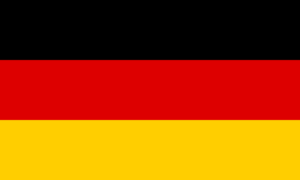 Berlin, Germany’s capital, is a city that pulsates with a unique blend of historical weight and contemporary vibrancy. Its story is etched into its very fabric, from the iconic Brandenburg Gate to the remnants of the Berlin Wall, stark reminders of a divided past.
Berlin, Germany’s capital, is a city that pulsates with a unique blend of historical weight and contemporary vibrancy. Its story is etched into its very fabric, from the iconic Brandenburg Gate to the remnants of the Berlin Wall, stark reminders of a divided past.
Today, Berlin is a global hub of culture, art, and innovation. Its diverse population contributes to a dynamic atmosphere, evident in its thriving arts scene, eclectic nightlife, and countless museums and galleries. The city boasts a remarkable number of cultural institutions, offering something for every interest.
Beyond its historical landmarks, Berlin is known for its green spaces, providing a welcome respite from the urban bustle. It’s a city of contrasts, where historical architecture stands alongside modern designs, and where a sense of freedom and creativity permeates the air. Berlin’s resilience and constant evolution make it a truly captivating destination.
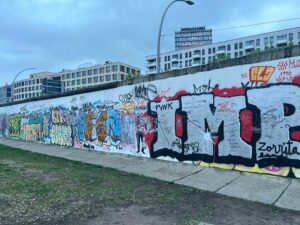 The Berlin Wall was erected by East Germany in August 1961 to prevent its citizens from fleeing to West Berlin. This concrete barrier physically and ideologically divided the city, becoming a potent symbol of the Cold War and the Iron Curtain separating East and West. For 28 years, it cut off families and friends, with heavily guarded "death strips" preventing escape.
The Berlin Wall was erected by East Germany in August 1961 to prevent its citizens from fleeing to West Berlin. This concrete barrier physically and ideologically divided the city, becoming a potent symbol of the Cold War and the Iron Curtain separating East and West. For 28 years, it cut off families and friends, with heavily guarded "death strips" preventing escape.
However, by 1989, a wave of protests and political changes across Eastern Europe put immense pressure on the East German government. On November 9, 1989, the unexpected announcement that citizens could freely cross the border led to jubilant crowds dismantling the wall. Its fall marked a pivotal moment, symbolizing the end of the Cold War and paving the way for German reunification.
Sachsenhausen concentration camp, established in 1936 near Berlin, served as a model and training camp for the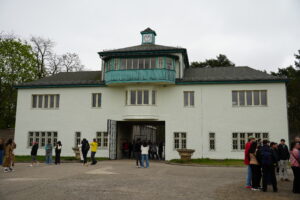 SS. Initially holding political prisoners, its inmate population expanded to include Jews, Roma and Sinti, homosexuals, Soviet prisoners of war, and others deemed "undesirable" by the Nazi regime. Over 200,000 people from across Europe were imprisoned there, subjected to forced labour, inhumane conditions, medical experimentation, and systematic killings.
SS. Initially holding political prisoners, its inmate population expanded to include Jews, Roma and Sinti, homosexuals, Soviet prisoners of war, and others deemed "undesirable" by the Nazi regime. Over 200,000 people from across Europe were imprisoned there, subjected to forced labour, inhumane conditions, medical experimentation, and systematic killings.
The camp's design, a symmetrical triangle, reflected the SS's desire for control. It housed numerous barracks, a prison, an infirmary, and later a crematorium with a gas chamber. Prisoners were forced to work in SS-owned industries and punishment details like the "shoe-running detail" and the Klinkerwerk brickworks, often leading to death from exhaustion and brutality.
As the war progressed, Sachsenhausen became a central hub for the concentration camp system. In 1945, with the Soviet army advancing, thousands of prisoners were sent on death marches, resulting in further casualties. Soviet and Polish troops liberated the camp on April 22, 1945, finding around 3,000 survivors. An estimated 30,000 to 50,000 people died in Sachsenhausen. After the war, the Soviets used the site as Special Camp No. 7 until 1950. Today, Sachsenhausen is a memorial and museum, commemorating the victims and atrocities committed there.
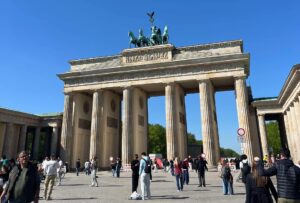 The Brandenburg Gate, an 18th-century neoclassical monument, stands as one of Germany's most iconic landmarks in Berlin. Commissioned by King Frederick William II of Prussia, it was constructed between 1788 and 1791 by Carl Gotthard Langhans, drawing inspiration from the Propylaea of the Athenian Acropolis. The sandstone gate features twelve Doric columns forming five passageways, with the central, wider passage originally reserved for royalty.
The Brandenburg Gate, an 18th-century neoclassical monument, stands as one of Germany's most iconic landmarks in Berlin. Commissioned by King Frederick William II of Prussia, it was constructed between 1788 and 1791 by Carl Gotthard Langhans, drawing inspiration from the Propylaea of the Athenian Acropolis. The sandstone gate features twelve Doric columns forming five passageways, with the central, wider passage originally reserved for royalty.
Topping the gate is the famed Quadriga, a chariot pulled by four horses driven by Victoria, the Roman goddess of victory, sculpted by Johann Gottfried Schadow. This statue has its own history, having been briefly taken to Paris by Napoleon after his conquest in 1806 before being returned.
Historically, the Brandenburg Gate marked the start of the road to Brandenburg an der Havel. Over time, it evolved into a powerful symbol. It witnessed Napoleon's triumphal entry and later became a site for Nazi propaganda. During the Cold War, the Berlin Wall's construction in 1961 left the gate isolated in the no-man's land between East and West Berlin, making it a poignant symbol of division. The gate regained its significance as a symbol of German reunification when the Wall fell in 1989, becoming a focal point for celebratory gatherings. Today, the Brandenburg Gate stands as a national emblem of peace and unity, attracting visitors from around the world.
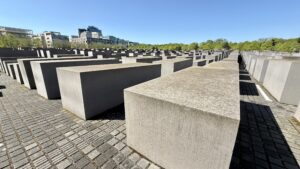 The Memorial to the Murdered Jews of Europe, also known as the Holocaust Memorial, stands in central Berlin as Germany's main tribute to the Jewish victims of the Holocaust. Designed by Peter Eisenman, the 1.9-hectare site features 2,711 concrete stelae of varying heights arranged in a grid-like pattern. This abstract and imposing field evokes a sense of disorientation and contemplation, encouraging individual reflection on the enormity of the tragedy.
The Memorial to the Murdered Jews of Europe, also known as the Holocaust Memorial, stands in central Berlin as Germany's main tribute to the Jewish victims of the Holocaust. Designed by Peter Eisenman, the 1.9-hectare site features 2,711 concrete stelae of varying heights arranged in a grid-like pattern. This abstract and imposing field evokes a sense of disorientation and contemplation, encouraging individual reflection on the enormity of the tragedy.
Opened in 2005, the memorial's design intentionally avoids explicit symbolism, allowing visitors to engage with it on a personal level. Beneath the field of stelae lies the "Place of Information," an underground center that provides historical context, personal stories of victims, and information about the sites of persecution. This combination of the abstract outdoor memorial and the factual indoor exhibition aims to create a comprehensive and moving experience for visitors, fostering remembrance and serving as a constant reminder of the atrocities committed during the Nazi era.
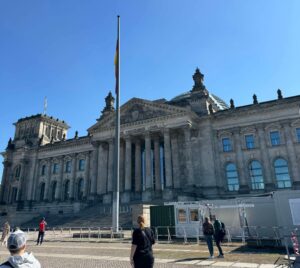 The Reichstag Building in Berlin is a structure steeped in German history. Originally completed in 1894 to house the German Parliament of the Second Reich, its architecture blends neo-Baroque and neo-Renaissance styles. It played a significant role in German politics until it was severely damaged by fire in 1933, an event exploited by the Nazi Party.
The Reichstag Building in Berlin is a structure steeped in German history. Originally completed in 1894 to house the German Parliament of the Second Reich, its architecture blends neo-Baroque and neo-Renaissance styles. It played a significant role in German politics until it was severely damaged by fire in 1933, an event exploited by the Nazi Party.
Following German reunification, the Reichstag underwent a significant renovation led by architect Sir Norman Foster. A striking modern glass dome was added, offering panoramic views of the city and symbolizing transparency in government. The building was rededicated in 1999 as the seat of the modern German Parliament, the Bundestag.
Throughout its tumultuous history, the Reichstag has witnessed imperial power, wartime destruction, Cold War division, and ultimately, the reunification of Germany. Today, it stands not only as a functioning government building but also as a powerful symbol of German democracy, resilience, and the country's journey through the 20th century. Its iconic dome has become a recognizable feature of the Berlin skyline and a popular destination for visitors.
 Checkpoint Charlie was the most famous crossing point between East and West Berlin during the Cold War. Situated on Friedrichstraße, it connected the American sector with the Soviet sector. Established after the construction of the Berlin Wall in 1961, it became a potent symbol of the Iron Curtain and the division of Europe.
Checkpoint Charlie was the most famous crossing point between East and West Berlin during the Cold War. Situated on Friedrichstraße, it connected the American sector with the Soviet sector. Established after the construction of the Berlin Wall in 1961, it became a potent symbol of the Iron Curtain and the division of Europe.
Initially, Checkpoint Charlie was a simple barrier, but it evolved into a heavily guarded crossing with watchtowers, tank traps, and armed personnel. It was the only crossing point where Allied military personnel and foreign civilians could officially pass between the two Berlins. The checkpoint witnessed tense standoffs, including a famous 1961 confrontation between American and Soviet tanks.
Beyond its official function, Checkpoint Charlie became a backdrop for espionage activities and daring escape attempts from East Berlin. Today, the original guardhouse is preserved as a museum, and a replica stands nearby, serving as a popular tourist attraction. It stands as a stark reminder of the Cold War's divisions and the eventual reunification of Germany.
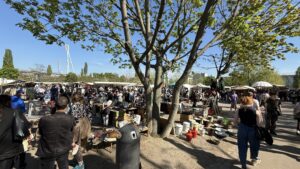 Mauerpark, translating to "Wall Park," occupies a significant stretch of the former Berlin Wall's "death strip," bordering Prenzlauer Berg and Wedding. Initially wasteland after the Wall's fall in 1989, citizen initiatives transformed it into a public green space, officially opening in 1994. Today, remnants of the Wall serve as a poignant reminder of the city's division.
Mauerpark, translating to "Wall Park," occupies a significant stretch of the former Berlin Wall's "death strip," bordering Prenzlauer Berg and Wedding. Initially wasteland after the Wall's fall in 1989, citizen initiatives transformed it into a public green space, officially opening in 1994. Today, remnants of the Wall serve as a poignant reminder of the city's division.
Every Sunday, Mauerpark bursts into vibrant life with its popular flea market, attracting thousands with its eclectic mix of second-hand goods, vintage finds, and artisan crafts. Alongside the market, the park offers open-air karaoke in its amphitheater, attracting both performers and enthusiastic crowds. Street musicians, food stalls offering diverse cuisines, and graffiti artists adding color to remaining Wall segments contribute to the park's unique and lively atmosphere. Mauerpark embodies Berlin's creative spirit and serves as a dynamic space for leisure, culture, and community.
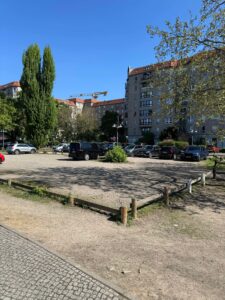 The Führerbunker was an underground complex in Berlin, constructed in two phases between 1936 and 1944. Initially an air-raid shelter, it became Adolf Hitler's last headquarters during the final months of World War II. Located beneath the garden of the Reich Chancellery, it was deeper and more reinforced than the older Vorbunker, to which it was connected.
The Führerbunker was an underground complex in Berlin, constructed in two phases between 1936 and 1944. Initially an air-raid shelter, it became Adolf Hitler's last headquarters during the final months of World War II. Located beneath the garden of the Reich Chancellery, it was deeper and more reinforced than the older Vorbunker, to which it was connected.
In January 1945, as Berlin came under heavy Allied bombing, Hitler moved into the Führerbunker, joined later by key Nazi figures like Eva Braun and Joseph Goebbels. It became the center of the crumbling Nazi regime, a cramped and damp environment where Hitler made increasingly unrealistic military decisions.
In late April 1945, in the face of Soviet forces closing in, Hitler married Eva Braun in the bunker and shortly after, they both committed suicide there. Their bodies were burned in the Chancellery garden above. The bunker complex was later mostly destroyed, and the site remained unmarked until a plaque was installed in 2006. Today, the location is a parking lot, a stark contrast to its historical significance as the final refuge of the dictator.
Excellent tour company (with Paul and Ciaran)
We did two tours with Birchys and both were excellent, also excellent value for money. Both guides were English speakers so clear and easy to understand. As a family we learnt so much and it’s given us a lot to talk about since. Communication with the company was clear, we knew where we had to meet at the start of the tour. Highly recommended.
★★★★★
Good experience
We thought this was very good value at €20 for a cocktail and two shots. As a previous reviewer said they could do with 2 behind the bar as the queues for drinks was quite long at the start.
★★★★★
Very interesting, highly recommended (with Natalie)
Absolutely fabulous. Natalie was really knowledgeable, easy to understand. The tour was well organised and we learnt so much. It is a sobering experience but very worthwhile a visit. Would absolutely recommend.
★★★★★
The travel journals of a middle age couple
All rights reserved
The travel journals of a middle age couple
All rights reserved